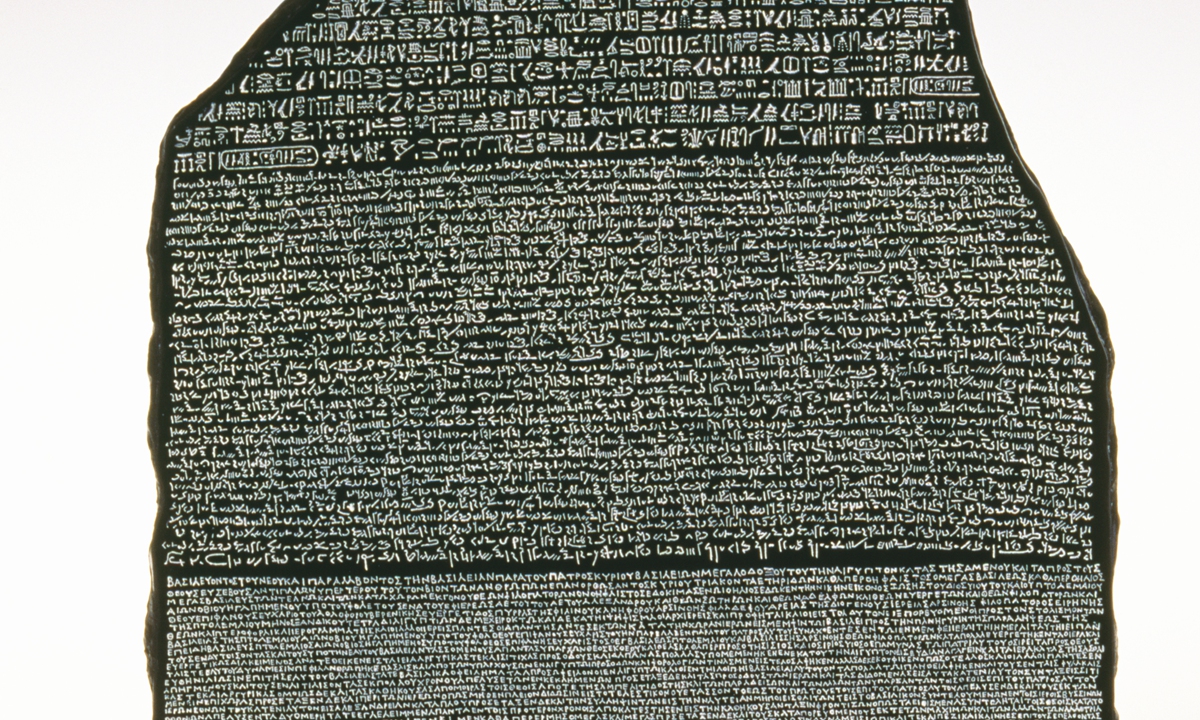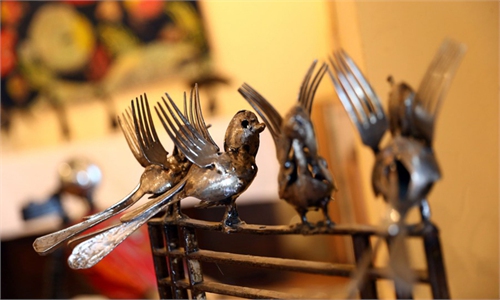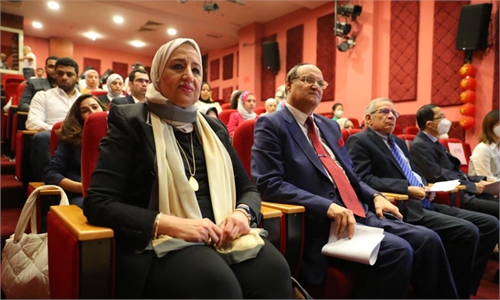
A rubbing of Rosetta Stone Photo: VCG
Marking the decoding of ancient hieroglyphs and the founding of Egyptology 200 years ago, a series of events are being organized by the Egyptian Ministry of Tourism and Antiquities.
The National Museum of Egyptian Civilization (NMEC) in Cairo wrapped up its two-day program last weekend for teaching children about the Ancient Egyptian language via sculpture and buff paints workshops.
Sama Ahmad, a 10-year-old student from Egypt, joined the interactive classes and portrayed some symbols of Egyptian hieroglyphs, the formal writing system used in ancient Egypt.
"I was happy to learn about old letters and to listen to information about the Rosetta Stone," she said while showing a paper carrying her name in the ancient language.
The ministry also launched a social media campaign to explain hieroglyphs as well as to display artifacts that are key to understanding ancient Egyptian civilization under the titles "Ancient Egyptian language," and "Learn about treasures in your province."
The Rosetta Stone is one of the main keys that helped to decipher the ancient Egyptian language and is the genesis of Egyptology.
On display at the British Museum, the granodiorite block was discovered in 1799 in the Nile delta town of Rosetta (Rashid in Arabic) by the occupying French forces. Later it fell into the hands of British officials and was sent to London.
On September 27, 1822, French scholar Jean-Francois Champollion was able to unravel the mystery of the stone and read the ancient Egyptian signs correctly after decades of attempts by scholars and researchers.
The stone dates back to 196 BC, when the syndicate of Egyptian priests gave a congratulatory speech to King Ptolemy V for assuming the throne of Egypt, thanking him for exempting all Egyptian temples from taxes due to a low flood.
Now the replica of the stone is fixed at the entrance lobby of the NMEC, which is inscribed in three languages: hieroglyphic, demotic and ancient Greek.
"Visitors coming from the gate of the museum can spot it from a far distance till approaching it and reading the label underneath," said Sayed Fadel, supervisor of scenario display of the NMEC.
The 200 anniversary of the creation of Egyptology is a good occasion for displaying the block, added Fadel, as he further stressed "thanks to decoding the stone, we managed to read texts, paintings and inscriptions on Egyptian temples that narrate the old history of Egypt."
He explained that the stone exhibited in London is one of six others that were placed in front of main Egyptian temples, but the other five have not been discovered yet.
Emili Jones, a 32-year-old tourist from Canada, was curious about the stone. She told the Xinhua News Agency that "the stone is a treasure of knowledge for exploring and digging into the mysterious history of Ancient Egypt."
Xinhua


